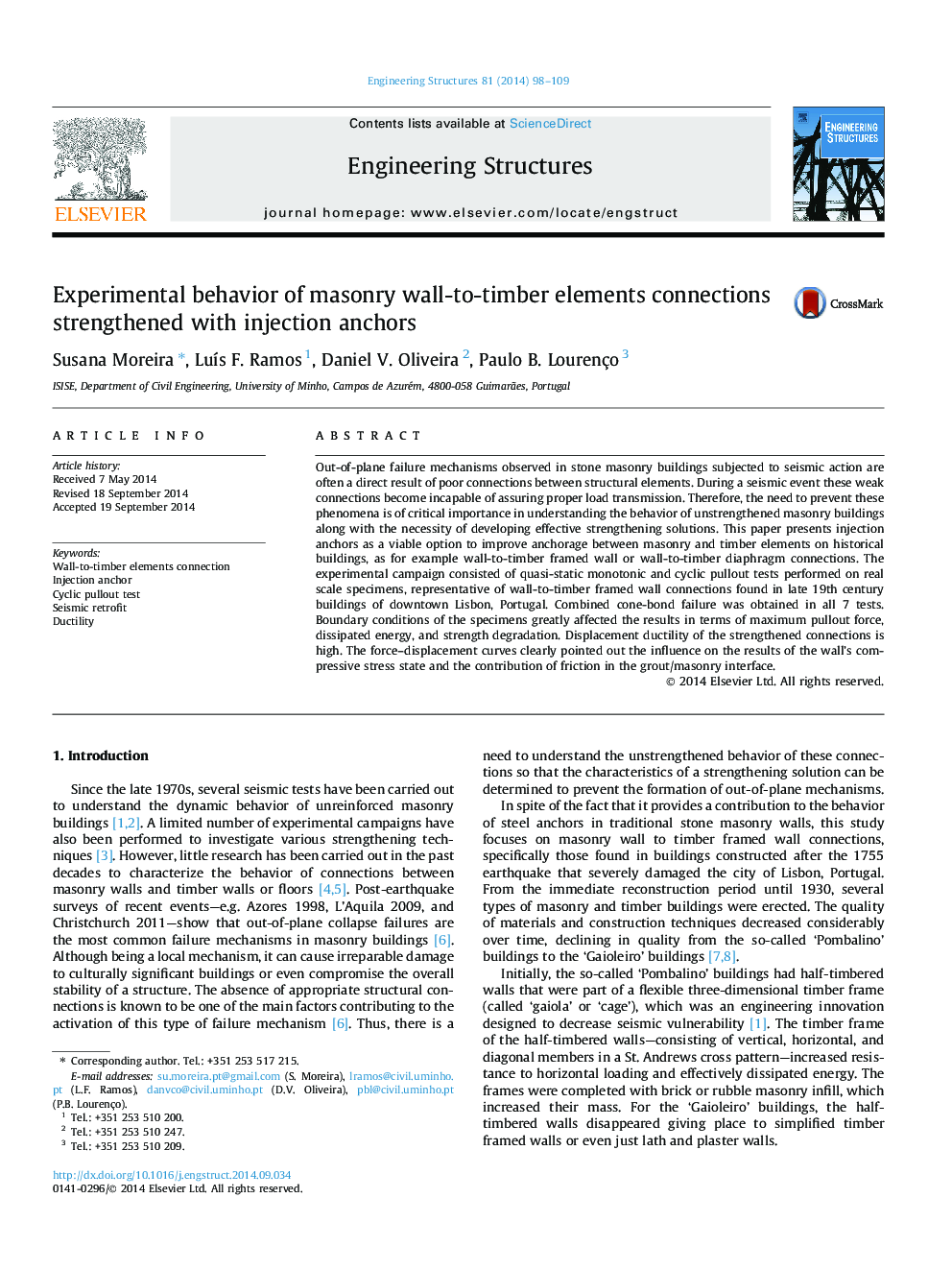| کد مقاله | کد نشریه | سال انتشار | مقاله انگلیسی | نسخه تمام متن |
|---|---|---|---|---|
| 6740702 | 504364 | 2014 | 12 صفحه PDF | دانلود رایگان |
عنوان انگلیسی مقاله ISI
Experimental behavior of masonry wall-to-timber elements connections strengthened with injection anchors
ترجمه فارسی عنوان
رفتار تجربی اتصالات عناصر دیوار به چوب سنگ تراشی با پیچاندن تزریق تقویت شده است
دانلود مقاله + سفارش ترجمه
دانلود مقاله ISI انگلیسی
رایگان برای ایرانیان
کلمات کلیدی
ارتباط عناصر دیوار به چوب، لنگر تزریق، تست کشش سیکل، تکمیل لرزه ای، شکل پذیری،
ترجمه چکیده
ساز و کارهای شکست در خارج از ساختمان در ساختمان های سنگ تراشی که در معرض عملیات لرزه ای قرار دارند اغلب نتیجه مستقیم بین اتصالات ضعیف بین عناصر ساختاری است. در طول یک رویداد لرزه ای، این اتصالات ضعیف قادر به تأمین انتقال مناسب بار نیستند. بنابراین، نیاز به جلوگیری از این پدیده ها در درک رفتار ساختمان های غیر قابل تقویت ساختمان با ضرورت توسعه راه حل های تقویت موثر اهمیت حیاتی دارد. در این مقاله، لنگرهای تزریق به عنوان یک گزینه قابل قبول برای بهبود لنگرگاه بین سنگ تراشی و عناصر چوب بر روی ساختمان های تاریخی، به عنوان مثال دیوار قاب چوبی دیوار یا اتصالات دیافراگم دیوار به چوب ارائه شده است. این آزمایش تجربی شامل تست های مونوتونی و سیکل های شبه استاتیک است که در نمونه های مقیاس واقعی ارائه شده است، نشان دهنده اتصالات دیوار قاب چوبی به دیوار در ساختمان های اواخر قرن نوزدهم در مرکز شهر لیسبون، پرتغال است. در مجموع 7 آزمایش، شکست ترکیبی مخروطی پیوند یافت شد. شرایط مرزی نمونه ها به شدت بر نتایج حاصل از حداکثر نیروی خروجی، انرژی تخریب شده و تضعیف قدرت موثر است. انعطاف پذیری اتصالات تقویت شده زیاد است. منحنی های نیروی جاذبه به وضوح نشان دهنده تأثیر در نتایج حالت استرس فشرده دیوار و سهم اصطکاک در رابط تراشه / سنگ تراشی است.
موضوعات مرتبط
مهندسی و علوم پایه
علوم زمین و سیارات
مهندسی ژئوتکنیک و زمین شناسی مهندسی
چکیده انگلیسی
Out-of-plane failure mechanisms observed in stone masonry buildings subjected to seismic action are often a direct result of poor connections between structural elements. During a seismic event these weak connections become incapable of assuring proper load transmission. Therefore, the need to prevent these phenomena is of critical importance in understanding the behavior of unstrengthened masonry buildings along with the necessity of developing effective strengthening solutions. This paper presents injection anchors as a viable option to improve anchorage between masonry and timber elements on historical buildings, as for example wall-to-timber framed wall or wall-to-timber diaphragm connections. The experimental campaign consisted of quasi-static monotonic and cyclic pullout tests performed on real scale specimens, representative of wall-to-timber framed wall connections found in late 19th century buildings of downtown Lisbon, Portugal. Combined cone-bond failure was obtained in all 7 tests. Boundary conditions of the specimens greatly affected the results in terms of maximum pullout force, dissipated energy, and strength degradation. Displacement ductility of the strengthened connections is high. The force-displacement curves clearly pointed out the influence on the results of the wall's compressive stress state and the contribution of friction in the grout/masonry interface.
ناشر
Database: Elsevier - ScienceDirect (ساینس دایرکت)
Journal: Engineering Structures - Volume 81, 15 December 2014, Pages 98-109
Journal: Engineering Structures - Volume 81, 15 December 2014, Pages 98-109
نویسندگان
Susana Moreira, LuÃs F. Ramos, Daniel V. Oliveira, Paulo B. Lourenço,
